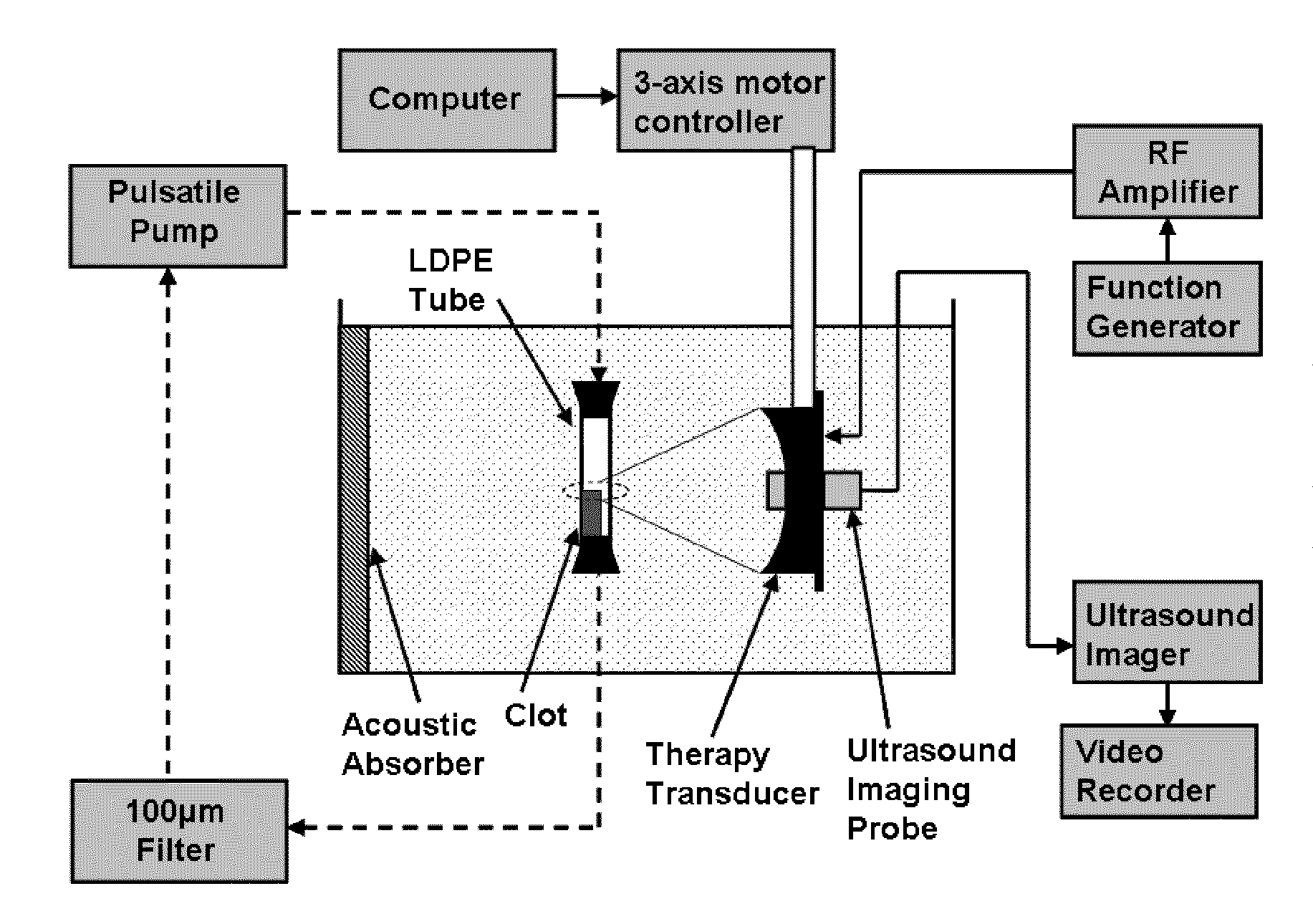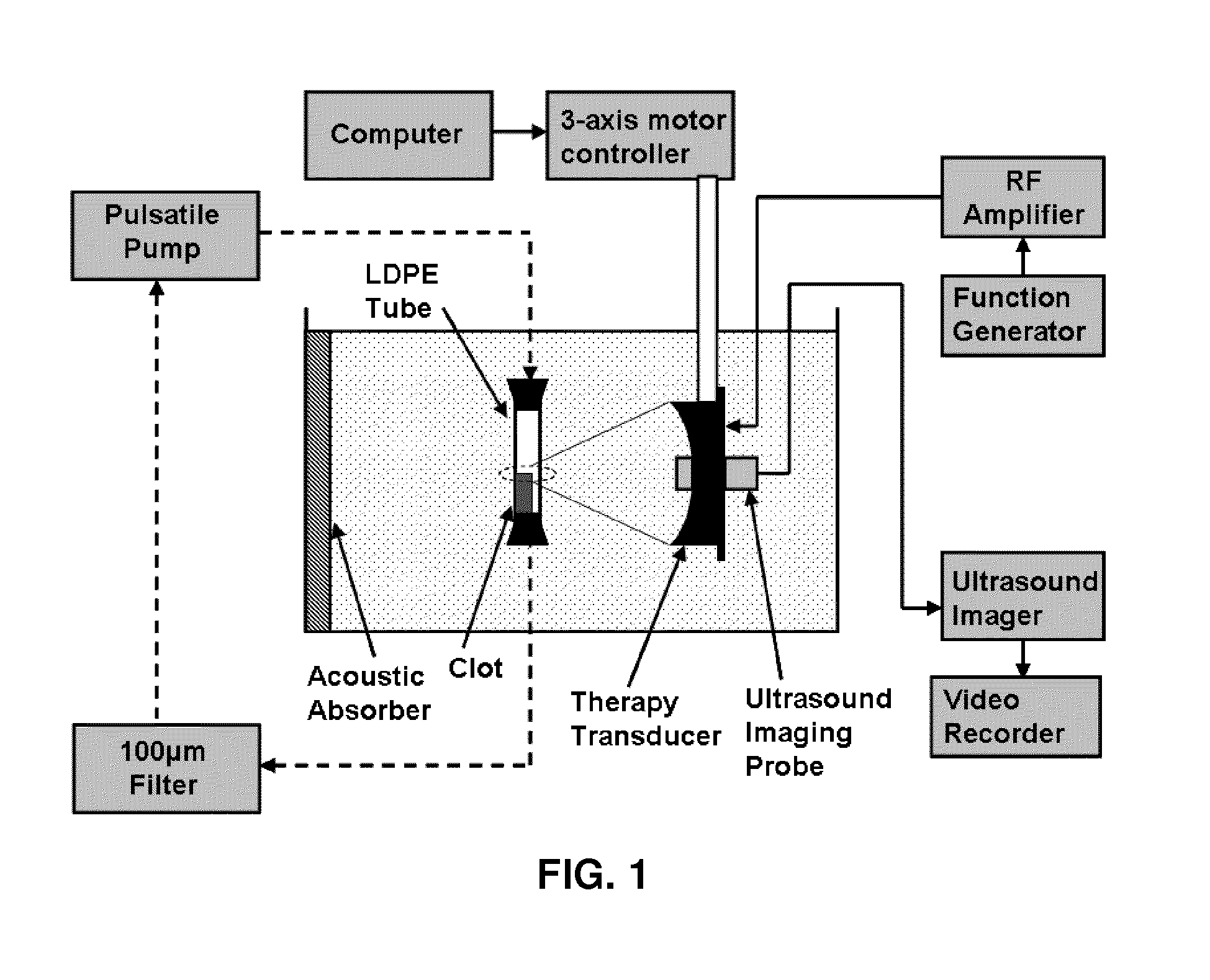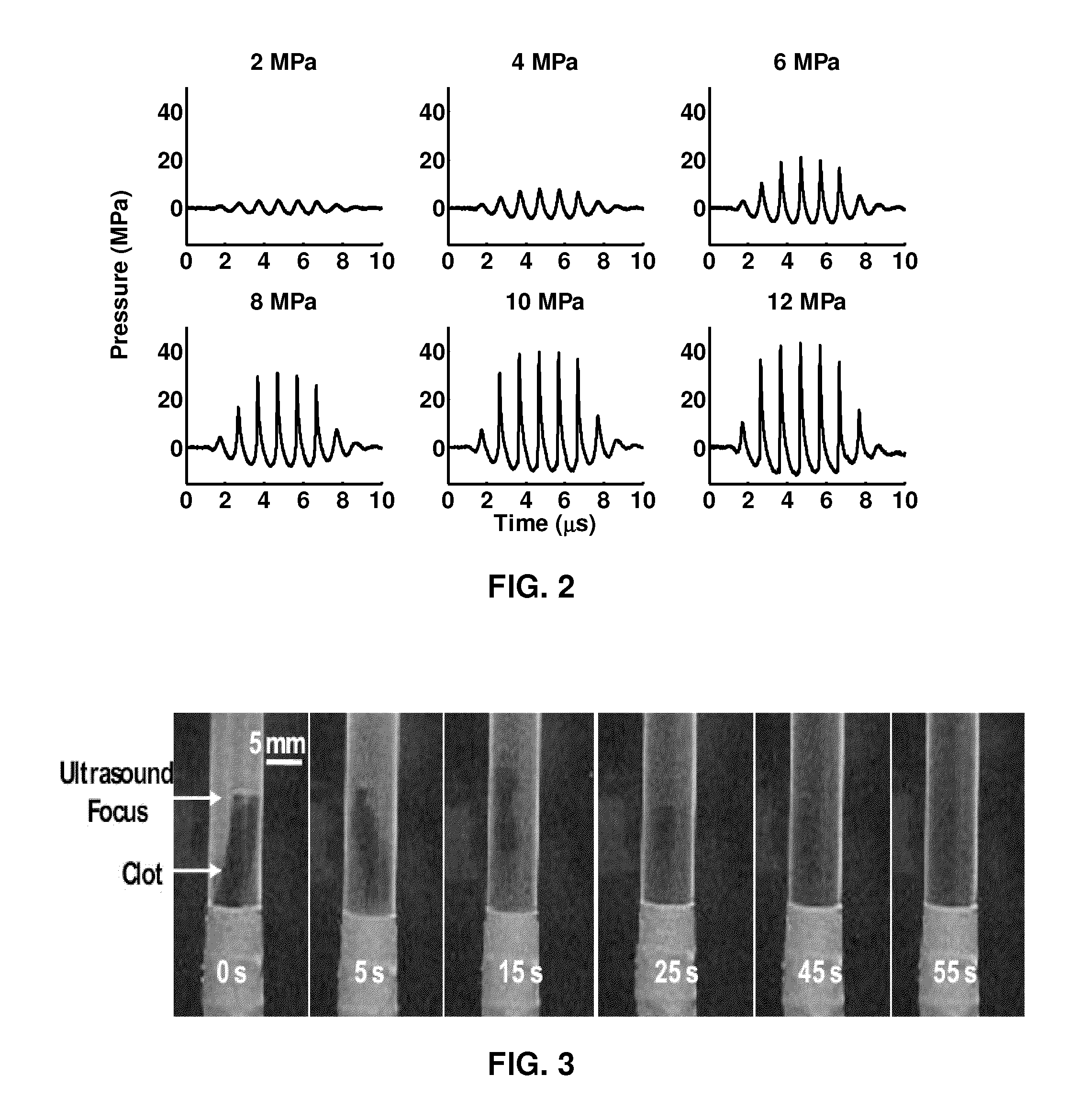Histotripsy for thrombolysis
a thrombolysis and histopathology technology, applied in the field of ultrasonography, can solve the problems of increasing bleeding complications, affecting the normal formation of clots, and affecting the normal clotting of hemostasis, and achieves the effects of facilitating clotting, facilitating clotting, and reducing bleeding complications
- Summary
- Abstract
- Description
- Claims
- Application Information
AI Technical Summary
Problems solved by technology
Method used
Image
Examples
Embodiment Construction
[0028]Example embodiments will now be described more fully with reference to the accompanying drawings.
[0029]Thrombosis is the formation of a blood clot in vasculature and is the primary cause of many vascular diseases, including heart attack, stroke, pulmonary embolism (PE) and deep vein thrombosis (DVT). Current clinical methods to treat thrombosis include anticoagulant and thrombolytic drugs, catheter-based surgical techniques, or a combination of the two where a catheter is used to locally deliver the thrombolytic agent to the site of occlusion. Thrombolytic drugs (e.g. Streptokinase, urokinase, rt-PA etc) administered without a catheter require long treatment times (several hours) and are non-specific, with a substantial risk of major bleeding that can be fatal in a small number of cases. The current catheter-based thrombolysis procedures include local delivery of thrombolytic agents by catheter, vein segment isolation and thrombolysis, and mechanical disruption and aspiration ...
PUM
 Login to View More
Login to View More Abstract
Description
Claims
Application Information
 Login to View More
Login to View More - R&D
- Intellectual Property
- Life Sciences
- Materials
- Tech Scout
- Unparalleled Data Quality
- Higher Quality Content
- 60% Fewer Hallucinations
Browse by: Latest US Patents, China's latest patents, Technical Efficacy Thesaurus, Application Domain, Technology Topic, Popular Technical Reports.
© 2025 PatSnap. All rights reserved.Legal|Privacy policy|Modern Slavery Act Transparency Statement|Sitemap|About US| Contact US: help@patsnap.com



